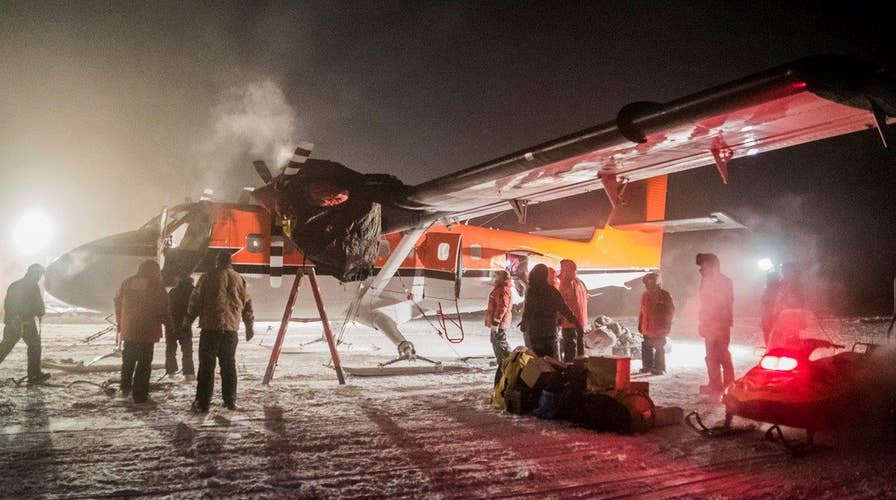WASHINGTON – It was so dark it was like being locked in a closet. It was almost cold enough to damage crucial plane parts. The flight in a small, overloaded bush plane to the South Pole was nine hours each way and there was nothing in between.
So to the outside world the Antarctic rescue flight of two sick Americans in June from a remote South Pole station sounded daring.
To the two Canadian pilots who crisscrossed the icy continent in June said it was really no big deal, but they said they were grateful to learn that the two people they rescued are home and on the mend.
In an Associated Press interview Tuesday, chief pilot Wallace Dobchuk and first officer Sebastien Trudel said they aren't comfortable being called heroes and were just doing their jobs. Dobchuk said his wife, who also has been to Antarctica, probably had "more hardship taking care of my daughter while I was away."
"It really is just kind of what we do," Dobchuk said.
"It just came down to, you know, I guess planning it," Dobchuk said. "We didn't get caught off guard. We weren't worried about anything. We weren't scared."
This wasn't as risky as it may seem because of proper training, planning and experience, said Kelly Falkner, who heads the National Science Foundation's polar programs office.
"They deserve a tremendous amount of credit," Falkner said, having flown with them before. "They are brave. I won't deny them that, but they also have been at it a long time and they know what they're doing."
Add in some good luck. The weather in Antarctica is fickle and it had to be just perfect. And it was ideal at just the right time, changing to bad hours after the rescued patients left Antarctica, Falkner said.
The U.S. National Science Foundation runs a station at the South Pole and usually between February and October planes don't fly in or out because it is too dark and cold. But then one person, and then a second, got sick. After much discussion, a rescue was mounted and Kenn Borek Air of Calgary and its two Twin Otter planes were hired. The second plane flew to the tip of Antarctica to be a back-up in case something went wrong. It didn't.
The two planes arrived at a British base 1,500 miles away, rested, and then Dobchuk, Trudel and engineer Michael McCrae flew to the South Pole. They rested again and flew back with their two patients.
The second plane took the two patients on to Chile, where they were treated before being sent home for more appropriate medical care. They are doing better, Falkner said. Only then did U.S. officials feel like they could breathe easy again, she said.
It wasn't easy.
"It was deep, deep pitch black," Trudel said. "I mean you can get in a closet and turn off the lights and that's pretty much what it was most of the time."
At times the full moon offered a bit of reflection off the ice or the shadow of mountains, but that wasn't too often, he said.
At the South Pole it was minus 75 (minus 60 Celsius). The cold "just makes everything fragile," Trudel said.
"Everything that is plastic, we've got to be careful with," Trudel said. "If something breaks that plane is what's going to take us back home — or not."
Add to that 11 hours' worth of fuel shoved in the plane that's not much bigger than a delivery truck, along with survival and medical gear. It got crowded and heavy.
Dobchuk said that made it harder to take off with the more than recommended weight. But they managed. Landing was a bit of a challenge, but Dobchuk wouldn't call it tense, just "uncomfortable."
So was sitting in the seat for nine hours, he added.
But they passed the time with hot Thai soup, until it ran out, and at times singing the song "In The Jungle," except they only knew the first two lines. So they kept repeating them.
Trudel said, "We have to work on our musical a cappella talents."






















